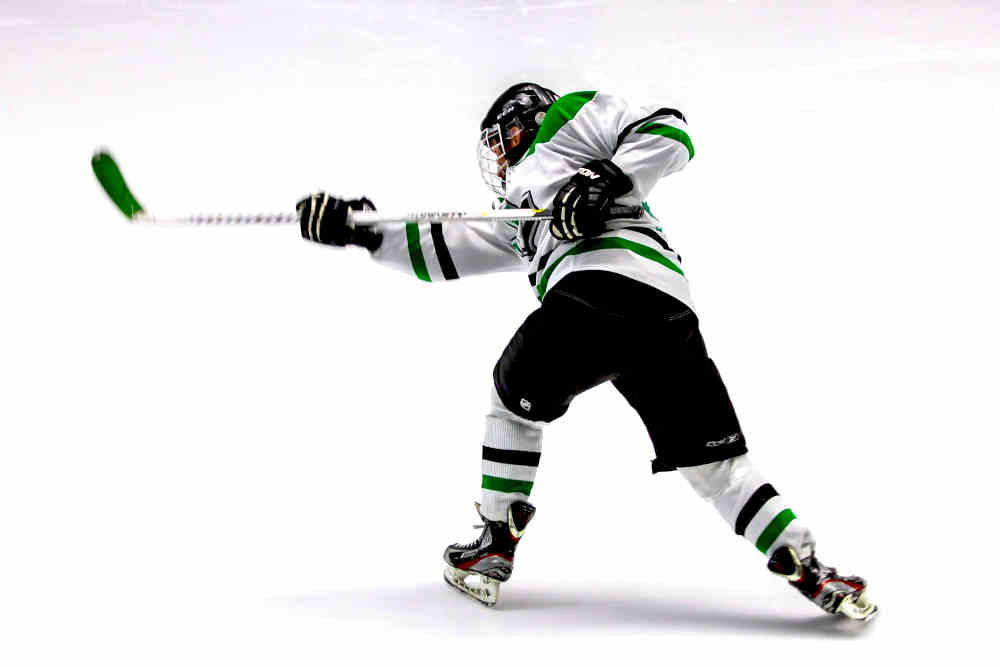
What Exactly Is Icing in Hockey?
The icing rule is an essential concept in hockey and very important to learn correctly, especially if you are new to the sport.
Table of Contents
What Does the Icing Rule Say?
The rule makes it an infraction for players to ice the puck.
Icing happens when a hockey player hits the puck across the red center line and all the way past the other team’s goal line on the other side of the rink.
The goal line is the red line that runs between the two corners of the rink and right past in front of the goal.
There are three variations to the icing rule depending on the league.
(1) Touch Icing
This icing rule requires a defensive player other than the goaltender to be first to touch the puck after it crosses the goal line. Otherwise, there is no icing call.
In particular, icing is not called when one of the attacking team’s own players is first to touch the puck after it crosses the goal line.
As one might expect with touch icing, players from both teams are likely to race to the puck at high speed to gain an advantage over the other side.
The upside of it is that touch icing can make the game more exciting.
Touch icing used to be the standard in the NHL until it was replaced in the 2013/2014 season.
(2) No Touch Icing
Under this rule, it doesn’t matter whether any players touches the puck after it crosses the goal line. Icing can still be called regardless.
No touch icing used to be the standard under IIHF rules until 2014.
It is still quite common in amateur leagues.
However, no touch icing is said to make the game less exciting without races to the puck.
(3) Hybrid Icing
Hybrid icing is what’s currently in effect in the NHL, the IIHF and many other professional leagues.
The hybrid rule of icing was introduced to mitigate the inherent risks of touch icing.
Although races to the puck can add to the excitement of the game, there are some obvious downsides with this approach.
It’s not just physically exhausting for the players. There is a greater chance of collisions and serious injuries as a result.
With hybrid icing, there can still be races to the puck but the linesman can make an icing call earlier, that is before the players run into the boards in the end zone.
The linesman can call icing (i) as soon as the first player reaches the end zone face-off dot and (ii) when it looks like the defending player will be the first to reach the puck.
What Is the Penalty for Icing?
When icing is called, play is stopped immediately and a face-off is arranged.
This puts the offending team at a disadvantage in a couple of ways.
First, unlike the other team, they are not allowed to substitute players before the face-off.
Second, the face-off takes place in the offending team’s defensive zone, closer to their own goal.
What is the Purpose of the Icing Rule?
As with many other rules in hockey, the point of the icing rule is to keep the game exciting.
Without the icing rule, teams would be far more likely to regularly shoot the puck long distance to the other side of the rink and then chase after it instead of passing the puck between players.
It’s not just that it would be easier to shoot the puck far out. There’d also be a strategic advantages for teams to do this.
For one, the team that is in the lead could use frequent long distance shots as a simple stalling tactic.
The off-side rule in hockey gives teams additional motivation to get the puck out of their defensive zone as soon they can. Once the puck is out of your zone, all the opposing players who remain in your zone will be off-side and under pressure to retreat.
What Are the Exceptions to the Icing Rule?
There are a number of exceptions to the icing rule.
(1) If You Score a Goal
If you actually manage to score a goal, then it’s not considered icing.
(2) If Your Team Is Short-Handed
If you have fewer players on the ice (e.g. one player is serving time in the penalty box), then you can fire the puck down the ice as much as you want.
(3) If An Opposing Player Could Have Reached the Puck
The linesman can wave off icing if it’s determined that a player on the other team could have gotten to the puck before it crossed the red goal line.
(4) If the Goaltender touches the puck
If the goalkeeper touches the puck after it crosses the goal line, then icing is typically waved off by the lineman.
Note that this last exception can vary by league. The NHL enforces a stricter interpretation and calls off icing as soon as the goaltender attempts to make a play for the reach, even if they ultimately fail to reach it first. The intent alone is sufficient to wave off icing.
How Has the Icing Rule Evolved Over Time?
Hockey never stands still and is of course an evolving sport. This fact is reflected in the history of the icing rule, which has changed significantly over the years and may change yet again in the future.
1937
This is the year the NHL adopted the icing rule. It called for a face-off in the defending zone if the defending team dumped the puck all the way to the other side without scoring a goal. This was done to discourage teams to ice the puck as a delaying tactic.
1951
The icing rule was amended. Icing would not be called if the goaltender touched the puck after it crossed the goal line.
2005
The icing rule was updated to disallow substitutions by the team that committed the icing. Prior to this change, it was common for teams to ice the puck when their players were tired and needed to be swapped.
2013
Hybrid icing was introduced in the NHL in an attempt to reduce the rate of injuries among players.
2014
The IIHF follows suit and adopts the hybrid icing rule.
